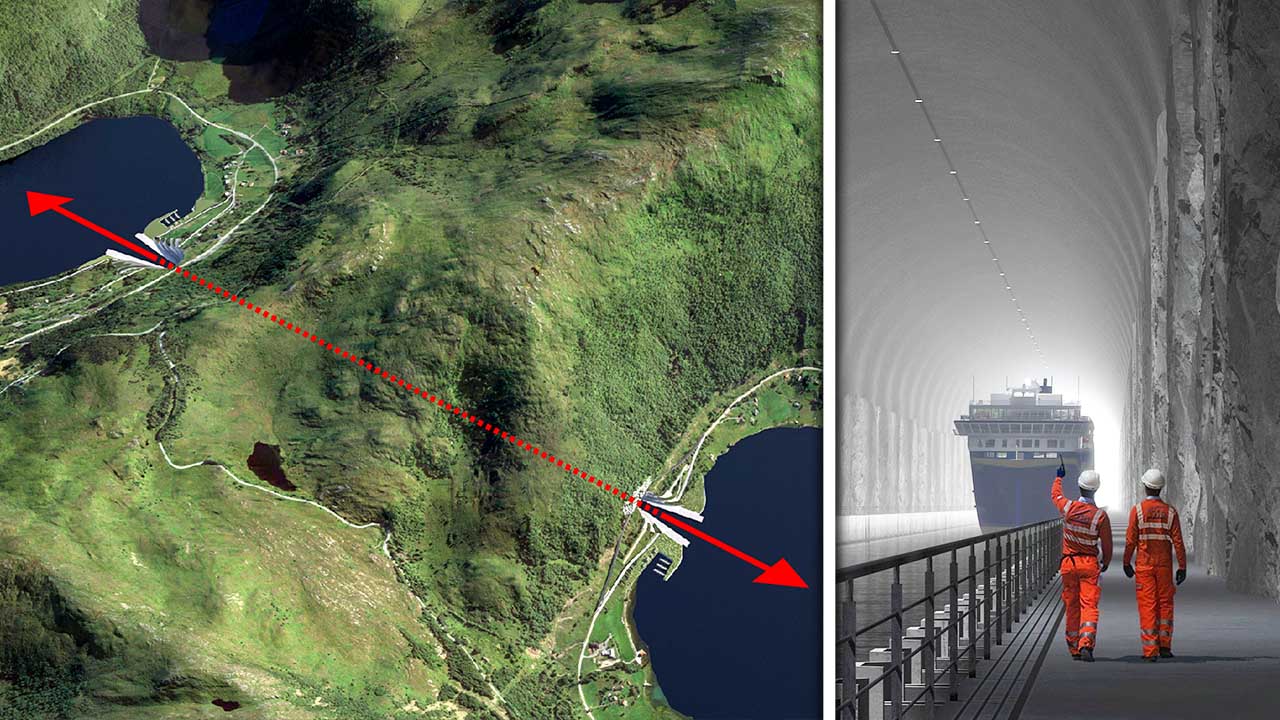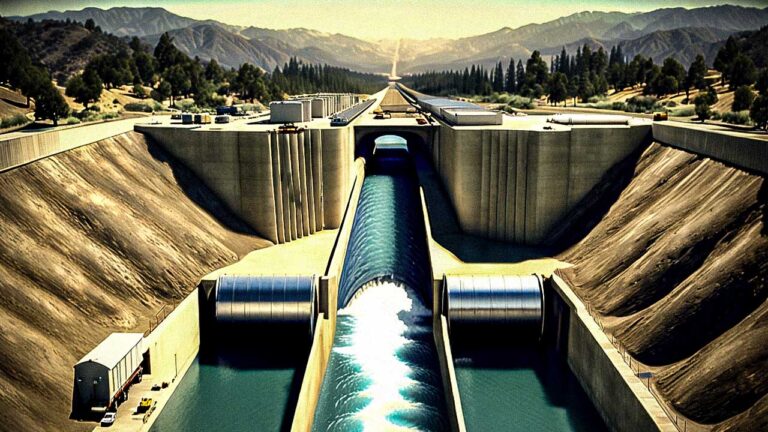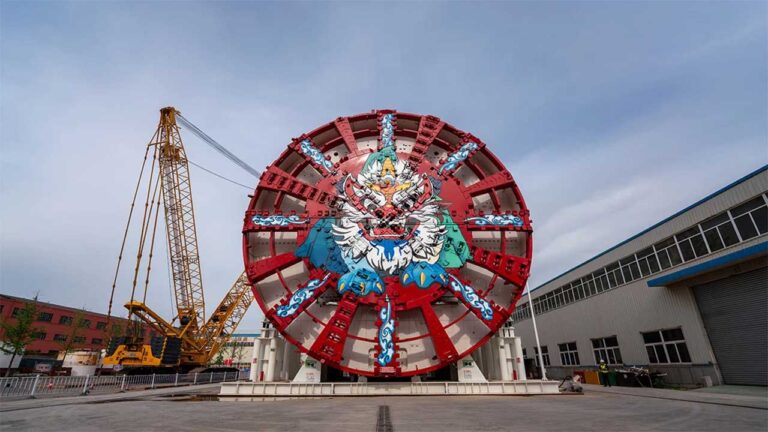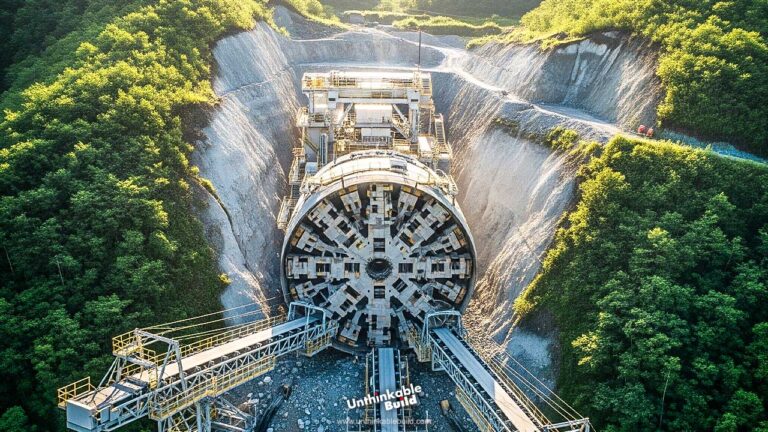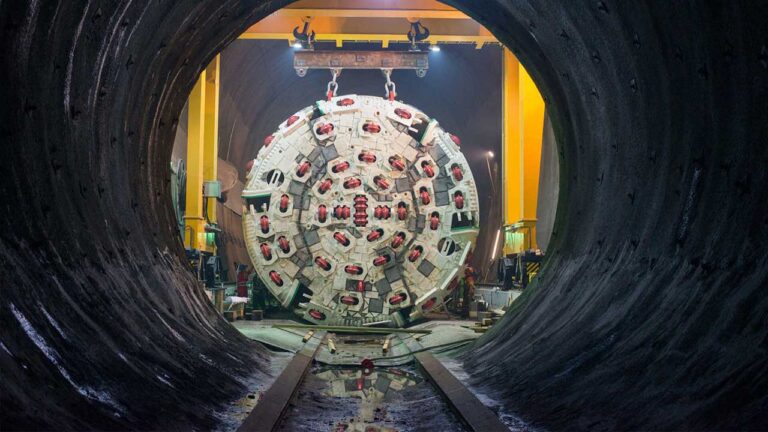Norway is Building World’s Largest Full Scale Stad Ship Tunnel
We’ve shared numerous projects showcasing the world-renowned tunnels constructed along highways and railways, many of which are hailed as engineering marvels. However, did you know that there’s a country where significant efforts are underway to prepare tunnels for ships?
The Norwegian Coastal Administration is set to construct the world’s inaugural full-scale tunnel designed specifically for ships. Known as the Stad Ship Tunnel, it will span 1.7 kilometers in length, with dimensions of 50 meters in height and 36 meters in width. This tunnel will provide a secure route for vessels as large as those operated by the Norwegian coastal lines Hurtigruten and Kystruten through the challenging waters of the Stadhavet Sea.
Along the Norwegian coast lies the formidable expanse known as the Stad Sea, a realm where nature’s might is on full display. Here, tumultuous ocean currents mingle with intricate underwater terrain, creating a landscape of unpredictable waves. When fierce winds join the fray, the coastline becomes a battleground of elemental forces, challenging even the most experienced sailors. Waves rise like giants, threatening vessels from all directions, leaving them in precarious situations. Even after the winds subside, the waves persist for days, a reminder of the sea’s unpredictable nature, making each journey a delicate balance upon shifting tides. Since the Second World War, a total of 33 individuals have lost their lives due to various incidents at this particular location. Throughout antiquity, every vessel navigating through this area has consistently exercised caution in anticipation of severe weather conditions.
Notably, the bottleneck within the peninsula measures just 2 kilometers at its narrowest juncture. This has spurred visionaries to contemplate the construction of a canal tunnel through the peninsula, offering ships an alternative route to circumvent the docks.
Also Read: Grand Paris Express: Europe’s Largest Metro Network
The inception of the tunnel plan dates back to 1874 when it was first mentioned in a local newspaper. Shortly thereafter, the same publication introduced another idea: constructing a railway tunnel spanning the peninsula. This alternative approach involved hoisting boats onto wagons for transportation across the land, offering a solution that was not only innovative but also economically favorable, estimated to cost only half as much as the initial proposal.
In 2011, a report by the Institute for Research in Economics and Business Administration for the Norwegian Coastal Administration concluded that the tunnel would not be economical. They presented a fact sheet on two sizes of tunnels, small and large, which would cost 1.264 billion and 2.027 billion kroner respectively.
In 2013, the Stad Ship tunnel made its debut appearance in Norway’s National Transport Plan, securing a budget allocation of one billion kroner. Standing at 49 meters high and 36 meters wide, the tunnel is designed to accommodate large vessels weighing up to 16,000 tons, including those operated by Hurtigruten Coastal Express. With water depths reaching 12 meters, this tunnel will significantly shorten the journey distance to 56 kilometers.
As per the Norwegian Coastal Administration, 81% of current ship traffic is eligible to utilize the tunnel. It will operate on a toll-free basis and be accessible to all vessels. Traffic control will be managed by the municipal traffic center in Fedje, directing boats with designated passage times, akin to slot allocations for aircraft. Priority will be given to commercial traffic, particularly cruise ships, although pleasure crafts and other vessels will also have access.
The anticipated speed limit for cruise ships passing through the tunnel is eight knots, translating to approximately a 10-minute journey. The construction of the Stad Ship Tunnel relies on established technology, with surplus materials earmarked for potential new business zones and the fortification of existing enterprises within the region.
Due to the dense gneiss that must be excavated, Terje Andreassen, interim project manager, proposes employing a Drill & Blast method. Material transport will rely on sea delivery due to the limited access of local roads, with measures such as rock walls or potentially cofferdams implemented to prevent water ingress during construction. The project entails the removal of approximately 3 million cubic meters of rock. The tunnel entrances feature rugged rock walls to seamlessly integrate with the surrounding landscape.
Designs also incorporate walkways and the construction of a new road bridge to enhance views of ships navigating through the tunnel. As the saga of the Stad Ship Tunnel unfolds, a cloud of uncertainty looms over the project. According to the Norwegian Coastal Administration, the endeavor has encountered a significant increase in costs, pushing it beyond the confines of its allocated budget.
Yet, amidst these fiscal challenges, a glimmer of hope emerges. The Norwegian government, recognizing the importance of the project, has earmarked 130 million Norwegian kroner for preparatory tasks and the impending tender competition scheduled for 2024.
In the quest to rein in costs and navigate through the murky waters of uncertainty, the Coastal Administration charts a strategic course. Through meticulous planning and negotiation, they seek to unlock significant savings. However, the true extent of these economies can only be revealed through the crucible of tendering and discussions with potential contractors.
With the stage set for the next phase of the project, the Coastal Administration diligently orchestrates the procurement of a contractor. Envisioned as a grand turnkey contract encompassing both design and execution, this endeavor represents a monumental undertaking.
Undeterred by the financial challenges, the Coastal Administration presses forward, fueled by the assurance of sufficient funds to sustain preparatory efforts. And so, with the groundwork laid and plans in motion, the construction of the Stad Ship Tunnel is poised to commence by the start of 2026, with an approximate cost of $260 million, marking the dawn of a new era in maritime infrastructure.
As the ambitious vision of the Stad Ship Tunnel takes shape, anticipation builds for what promises to be a monumental undertaking. With construction projected to span five years, this colossal endeavor heralds the dawn of a groundbreaking achievement. Upon its completion, the Stad Ship Tunnel will proudly claim the title of the world’s first full-scale cruise ship tunnel.
Upon its grand opening, the Stad Ship Tunnel will boast an impressive operational capacity, capable of facilitating the passage of up to 5 ships per hour. Yet, the marvel of this engineering feat doesn’t end there. In a stroke of ingenuity, provision has been made to accommodate smaller vessels, allowing them to traverse side-by-side. This innovative approach not only enhances efficiency but also augments the tunnel’s overall capacity, ushering in a new era of maritime transit along the Norwegian coast.
Embark on a journey into the heart of maritime innovation as we explore the transformative impact of the Stad Ship Tunnel, a testament to human ingenuity and engineering prowess. Nestled along the treacherous waters of Stadhavet, the tunnel emerges as a beacon of safety and efficiency, promising a sea change in maritime transport.
In the unforgiving embrace of wind, currents, and towering waves, Stadhavet stands as a formidable adversary, challenging even the most seasoned seafarers with its unpredictable conditions. Waves reaching heights of up to 30 meters pose a constant threat to vessels, underscoring the urgent need for a safer passage.
Also Read: Austria Constructs A26 LINZER AUTOBAHN Mega Tunnel with a New Giant Machine
Enter the Stad Ship Tunnel, a feat of engineering excellence that promises to revolutionize maritime safety. By providing a controlled and predictable route through this perilous stretch of sea, the tunnel offers a lifeline to commercial shipping, ensuring safer deliveries, reduced waiting times, and shorter transport durations. Industries ranging from fishing to aquaculture stand to benefit, as the tunnel provides a reliable alternative for transporting goods, mitigating income losses and improving quality retention.
Yet, the impact of the Stad Ship Tunnel extends beyond mere convenience. With reduced fuel consumption and lower CO2 emissions, the tunnel emerges as a champion of environmental sustainability, aligning with political goals of shifting transport from road to sea. Furthermore, it opens doors to innovative solutions such as keel transport, paving the way for fresh seafood deliveries via cruise ships to the continent.
In essence, the Stad Ship Tunnel transcends its role as a mere infrastructure project, as it symbolizes a bold investment in Norway’s future. As we sail into uncharted waters, let us embrace the promise of safer, more efficient, and environmentally friendly maritime transport along the Norwegian coast. The Stad Ship Tunnel is a testament to human ingenuity, a beacon of hope for generations to come.

